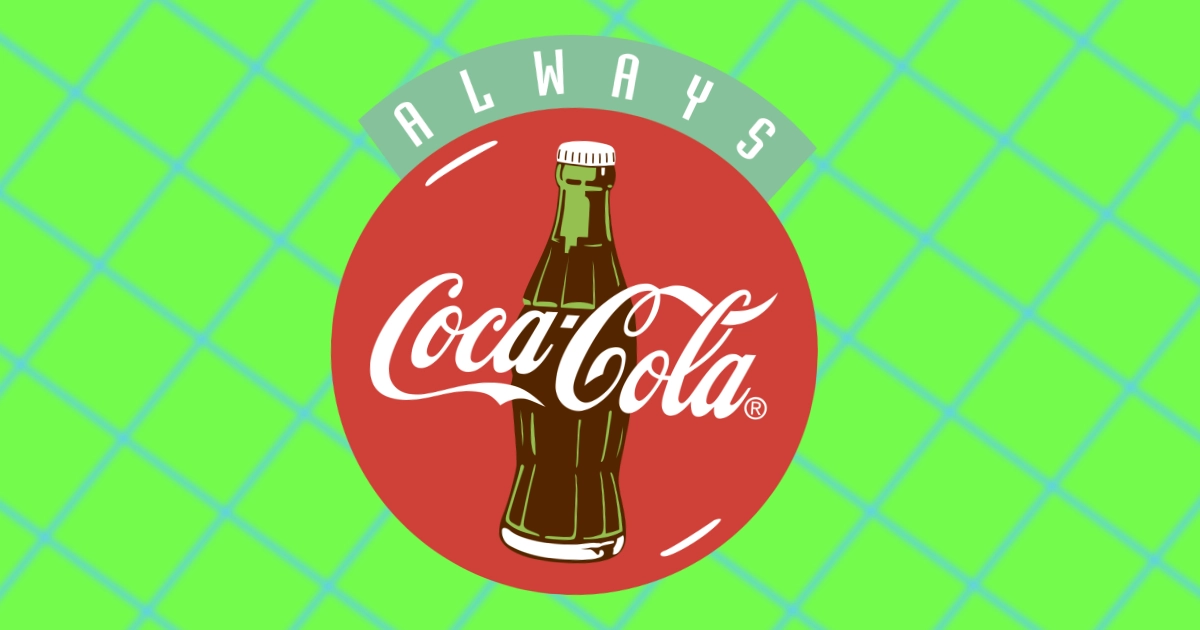
The Coca-Cola Company
In 1991, the Soviet Union collapsed.
MTV dominated youth culture, while Seattle's grunge music challenged mainstream rock.
Against this backdrop, Coca-Cola launched its "Always Coca-Cola" campaign, connecting with audiences via commercials that blended familiar imagery with current trends.

In the 1980s, Pepsi and Coca-Cola battled for control of the soft drink market.
Pepsi launched direct attacks on Coca-Cola's dominance through blind taste tests called "The Pepsi Challenge."
They paid Michael Jackson $5 million to star in their commercials and later signed Madonna for $5 million more.
These star-powered ads targeted teenage and young adult consumers.
Coca-Cola stuck to using the same slogans and imagery across all advertisements.
This strategy had worked in the 1950s and 60s, when they dominated the market with a 60% share.
But by 1980, their share had dropped to 24%, while Pepsi's rose to 18%.
Their response came in February 1993 with the "Always Coca-Cola" campaign.
This campaign replaced their old slogan "Can't Beat the Real Thing" and introduced 27 new TV commercials in its first year alone.

CAA, a talent management agency, took over Coca-Cola's advertising in 1991.
The agency needed to show Coca-Cola as more than a cold drink on a hot day—make it a permanent part of people's lives.
Phil Dusenberry and Len Fink led the creative team at CAA.
They started by listing actual moments when people drink Coke: backyard barbecues, movie theaters, Christmas dinners.
They collected stories from customers who described drinking Coke during first dates, after baseball games, and at family reunions.
The team tested various taglines and concepts.
They wanted three things: simple words, emotional impact, and broad appeal.
"Always Coca-Cola" emerged as the winner.

The phrase worked because it meant something tangible—you could find Coke in every store, at every season, in every country.
CAA's choice paid off.
When they showed the ads to test audiences, people nodded and shared their own Coke stories.
One viewer remembered how his grandfather always kept Coke bottles in his garage fridge.
Another recalled drinking Coke at her wedding reception.

The “Always Coca-Cola” TV commercials showed specific scenes:
Each ad with a Coca-Cola bottle or can visible but not central.
Their print ads paired the red Coca-Cola bottle with clear, memorable images:
On billboards, Coca-Cola stripped their message to its basics.
A single bottle stood against a white background, paired with three words: "Always Coca-Cola."
This straightforward approach set Coca-Cola apart from its competitors' flashier tactics.
Pepsi hired celebrities like Madonna and Michael Jackson to appeal to young consumers.
Sprite created edgy commercials featuring hip-hop artists and skateboarders.
Chasing current trends rather than lasting connections.
The new commercials used specific visual elements and storytelling techniques to connect with viewers.
The "Northern Lights" commercial showed polar bears drinking Coke under the aurora borealis.
The bears sat shoulder-to-shoulder on snow-covered ground, passing a glass bottle between them.
Their white fur stood out against the dark sky, while green and purple lights danced overhead.
The "Holidays are Coming" ad featured a convoy of red Coca-Cola trucks, each decorated with 30,000 yellow lights.
These trucks drove through small towns at night, their headlights cutting through falling snow.
As they passed, street lamps flickered on, and people stepped out of their homes to watch.
The trucks' familiar jingle, played over scenes of families gathering at windows and doorways.
The “Always Coca-Cola” campaign also featured celebrities drinking Coke in everyday settings: at diners, basketball courts, and beach picnics.

In the early 1990s, CGI technology transformed animation by offering alternatives to hand-drawn techniques.
The "Always Coca-Cola" campaign seized this opportunity in 1993 by creating digital polar bears using the new tech.
The bears moved with smooth precision—their fur rippled, their faces showed clear emotions, and their movements matched real animals.
The ads placed these digital bears in realistic winter settings, creating scenes that looked both magical and believable.
The animation team used Alias/Wavefront's PowerAnimator software, the predecessor to today's Maya 3D.
This software let animators control the way light hit each strand of fur to how the bears' weight shifted as they walked across ice.
While "Jurassic Park" showed moviegoers how CGI could create dinosaurs, Coca-Cola's polar bears proved that digital characters could make people feel emotion.

Coca-Cola's "Always Coca-Cola" campaign proved the power of consistent, adaptable advertising.
Each commercial kept the core message while finding new ways to tell it.
The "Northern Lights" commercial showed polar bears drinking Coke while watching the aurora borealis.
In "Animated Sun," a cartoon sun sweats and pants in the heat until finding relief in an ice-cold Coke.
The "Coke and Meal" commercials showed people drinking Coke in specific eating situations—teenagers sharing pizza and Coke at a diner, families grillingx burgers in backyards, friends splitting Chinese takeout in an apartment.
During Olympics and World Cup seasons, Coca-Cola ran ads showing athletes drinking Coke after competitions and fans celebrating with Coke in the stands.
The campaign also featured celebrities using Coke in everyday situations—Paula Abdul dancing with a Coke during rehearsal breaks, or Michael Jordan grabbing a Coke from a vending machine after practice.